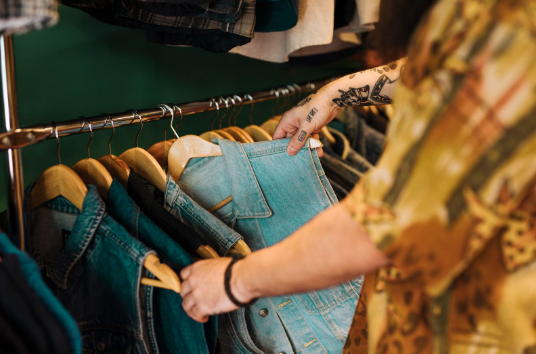
Sensors embedded in garments enable the capture of biometric data and its
application in a variety of solutions that are adding functionality to the fashion
industry.
The future of fashion goes far beyond aesthetics: functionality is the main feature of the upcoming smart or connected clothing, which includes garments with electronic components and sensors integrated into fabrics that send information via Bluetooth to apps installed on smartphones.
These components generally operate on batteries or a small generator that converts body heat into electricity. However, the core of all this innovation lies in the sensors, which can be used to track a variety of human body data, analyze it, and deploy an enormous range of possible applications based on their detection.
The growing demand for smart clothing creates growth opportunities for the entire market. Data is captured in real time and sent to applications, providing information on a variety of sports metrics, including intensity and recovery, calories burned, fatigue levels, sleep quality, and more.
For example, the case of Nadi X Yoga Pants is interesting—they can detect when a yoga posture needs improvement: using haptic feedback, the smart pants create small vibrations in the part of the body that needs adjustment, serving as a warning to the user.
Simultaneously, the app offers instructions on how to optimize each pose, among other guidance to improve practice.
Socks are another area where data is key. Sensoria Fitness uses advanced textile sensors integrated into each sock, along with a device that attaches to the sole, to provide precise data on how the foot lands while walking or running. The connected app offers tips for improving walking and running techniques and tracks steps, speed, altitude, and distance covered.
On the other hand, Siren’s smart socks, officially called Siren’s Diabetic Socks and Foot Monitoring System, use tiny sensors placed throughout the sock fabric to measure foot temperature at six different points and send all the information to the app. This data can
detect early ulcers that often lead to amputations.
Designed and manufactured in France, Neviano swimsuits feature an integrated UV sensor. The sensor is about half the size of an adult’s thumb, is water-resistant, and connects to the user’s iOS or Android device. It sends alerts when UV levels are high to remind users to apply more sunscreen.
The opportunities opened up by connected clothing are endless and still in their infancy. They can be used in industries ranging from sports and fitness to healthcare. The smart clothing market is projected to reach USD 5.3 billion by 2024, driven by the growing
demand for body activity monitoring through sensors, the widespread adoption of sports and fitness/health applications, and, most importantly, the evolution, consolidation, and growth of all technologies that enable intelligent data capture and monitoring, to better adapt to people’s needs.
Julio Cesar Blanco – April 19, 2023


